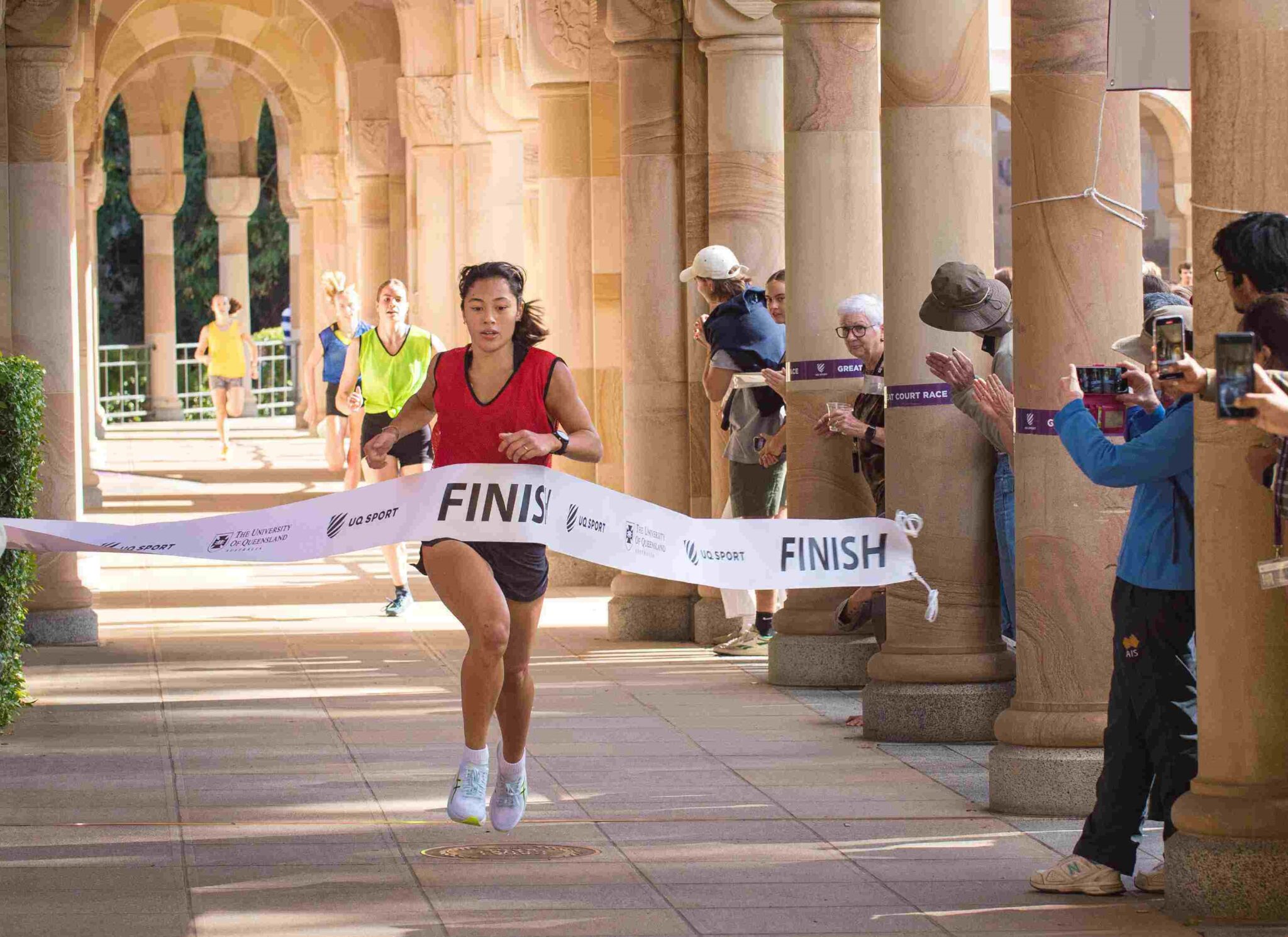Defying doctors: How Ryan Raghoo leaped out of a wheelchair and into Paralympic contention
For all of his 19 years, Raghoo has been challenging what is considered the norm. Born with Cerebral Palsy (CP), a motor impairment disorder that affects movement and posture, Raghoo was given little chance at life, let alone qualifying for the Paralympics.It’s 9pm on a warm Friday evening in Brisbane. Floodlights glow on an empty track at the Queensland Sport and Athletics Centre.
British long jumper Ryan Raghoo reaches for his phone.
Family and friends are waiting patiently on the other side of the world, some 16-odd-thousand kilometres away in London, for a scrap of news. A text message, photo. Anything.
A brief Twitter post says it all.Raghoo’s 4.61m leap at the 2016 Queensland Open Championships not only saw him smash the Great Britain T36 Long Jump record, but also ease past the qualifying standard for the Rio Paralympics.
But Raghoo’s Tweet sign-off – “so much more to come” – is typical of a man always looking to move the needle.For all of his 19 years, Raghoo has been challenging what is considered the norm.
Born with Cerebral Palsy (CP), a motor impairment disorder that affects movement and posture, Raghoo was given little chance at life, let alone qualifying for the Paralympics.
Told by doctors he would never walk or talk, Raghoo proved everybody wrong when he left the wheelchair at age seven.
It was the first step on the path to becoming an elite athlete.
“One of my earliest sports memories is being forced to do the 60m sprint at school,” Raghoo tells UQ Sport.
“I remember crying and not wanting to go in the race because I had not long come out of a wheelchair.
“I came last by a country mile, and I remember crying to my dad and saying I’m never going to achieve anything.”
Raghoo, of Guyanese and Indian heritage, openly admits to detesting sport throughout his schooling.
Forced to compete against able-bodied athletes, or excluded entirely because of safety fears, it wasn’t until Raghoo took part in a British Athletics disability talent day during secondary school that the competitive fuse was lit.
“That day, I took part in every event they had going and I was good at everything I tried: discus, shot put, javelin – you name it,” Raghoo recalls.
“Then we did the 100m and a couple of relays, and it turned out I was quick. They told me if I trained I’d make it to national level.”
After a brief flirtation with disability cricket, where Raghoo rose to play for English county Surrey’s Disability squad, athletics became top priority.
Linking with Harry King, Head of Athletics at London’s Brunel University, Raghoo initially focused on sprinting, with success quick to come by.
He won gold in the 100m (T35) at the 2015 British Universities & Colleges Sport Championships, and placed 5th for Great Britain in the 100m (T38) at the 2015 IWAS World Games in The Netherlands.
But changes to CP classifications for track athletes shortly after the IWAS World Games left Raghoo at a disadvantage amongst other sprinters, leading to an unexpected switch to long jump.A long jump (F36) gold medal at first attempt (2.82m) at the CPISRA meet in August was enough for Raghoo to commit full-time to the sport, and an ambitious plan to qualify for the Rio Paralympics was hatched.
After being contacted by a host family in Brisbane with links to CP, Raghoo planned a month-long summer training camp in Australia, and sought out The University of Queensland as a base throughout February.
“The whole point of coming over here was that the warm weather was going to be very beneficial for my body in terms of muscle tightness,” Raghoo says.
“The facilities at UQ are amazing. Back home I work out at an indoor track, because it’s so cold outside.
“It’s hard to explain just how big a difference it makes training in a warm climate at UQ. The heat has just been completely amazing for me.”
After jumping a personal best 4.26m at the 2016 ACT Championships in Canberra – the first of two Australian events – Raghoo met with UQ Sport’s Head of Athletics, Stacey Taurima, with the pair developing a simple, yet refined four-week training plan designed to get the Brit in the frame for Parlympic selection.
“When I found Stacey it was just very lucky. It turns out Stacey and my coach in the UK (Harry King) move in the same circles, and they have similar coaching philosophies.
“Stacey’s approach is the same and we really clicked – he likes underdogs and he wanted to help me out in whatever way he could.
“Training with him is a different experience and it allowed me to pick his brain and learn as much from him as possible.”A long jump (F36) gold medal at first attempt (2.82m) at the CPISRA meet in August was enough for Raghoo to commit full-time to the sport, and an ambitious plan to qualify for the Rio Paralympics was hatched.
After being contacted by a host family in Brisbane with links to CP, Raghoo planned a month-long summer training camp in Australia, and sought out The University of Queensland as a base throughout February.
“The whole point of coming over here was that the warm weather was going to be very beneficial for my body in terms of muscle tightness,” Raghoo says.
“The facilities at UQ are amazing. Back home I work out at an indoor track, because it’s so cold outside.
“It’s hard to explain just how big a difference it makes training in a warm climate at UQ. The heat has just been completely amazing for me.”
Taurima, himself a former long jumper, admits Raghoo’s raw jumping technique needed fine-tuning, given his limited experience in the sport.
The pair trained together almost daily, with Raghoo joining in sessions alongside UQ Sport Academy athletes.
“The focus was teaching him a little bit about the long jump and what’s required, but also working around with his flight mechanics – getting him stable in the air so he knows where he is, and how to land. That was probably the main focus,” Taurima explains.
“There were some issues, and a lot of them had to do with speed. He didn’t know how to control his speed. He didn’t know how to accelerate off a board, and didn’t know how to control flight.
“So we just simplified it. We didn’t have a lot of time, so we just long jumped,” Taurima says.
There was also the challenge of delivering training feedback in a way that Raghoo could decipher it both mentally and physically, given his limitations.
“People with CP are sometimes affected by visual, hearing, speech, or intellectual impairments,” explains UQ PhD candidate Jared Gillet, who, alongside the Queensland Cerebral Palsy and Rehabilitation Research Centre and UQ Child Health Research Centre, is heading up a world-first combined strength and anaerobic exercise trial in young adults and adolescents.
“While the brain lesion responsible for CP is non-progressive, it results in secondary neuromuscular problems such as reduced joint range of motion, increased joint stiffness, coordination difficulties, over-activation of muscles, and muscle weakness,” says Gillet.
With Raghoo, Taurima focused on simplifying the learning process and keeping instructions to a minimum.
“Someone like Ryan is very unique is his own movement signature,” Taurima says.
“Previously, people were telling him how he should move, but that creates frustration for someone who can’t achieve what they’re telling him to do.
“With me, it was about giving him cues, and understanding what he wanted.
“Explaining what a cue is prior to competition, makes it easier for you as a coach to get feedback off an athlete.”
Raghoo acknowledges the biggest challenge he faces in delivering high-level performances is never fully understanding how his body is functioning, which leads to inconsistencies in his jumps.“Most athletes, if the coach tells them they’ve done something well, physically they can understand what they’ve done well,” Raghoo says.
“Because of CP and the brain damage, I can’t feel the difference if it’s been a good jump or a bad one, which is why video analysis and talking is so important for feedback.
“Stacey and I spend a lot of time talking; if he needs to explain things 10 times just so I can understand, he’s willing to do it.”
Raghoo’s crowning moment came just days before returning to the UK.
After countless training sessions in the searing Brisbane sun, both under the tutelage of Taurima and as a solo, Raghoo delivered when it mattered most.
Despite fouling on half of his six jumps, Raghoo hurled towards a Rio Paralympics berth on his final attempt at February’s Queensland Open Championships, with a distance of 4.61m.
11cm over the Paralympic standard, and an improvement of 1.79m in the space of just nine months. All this from a man told he’d never walk, let alone jump.
“I’m pretty confident I can change the world,” declares Raghoo.
“ My whole message about ‘Enabled not Disabled’ is to get more people into sport and to demonstrate that anything is possible.
“No matter where you’ve come from or your background, you can achieve whatever you want to achieve.
“I spent seven years in a wheelchair and now I’m an Olympic-standard long jumper.
“It will give hope to parents and children all over the world, and show people that you don’t have to believe what doctors tell you,” Raghoo says.
To follow Ryan’s journey, follow him on Twitter, or visit his website.

